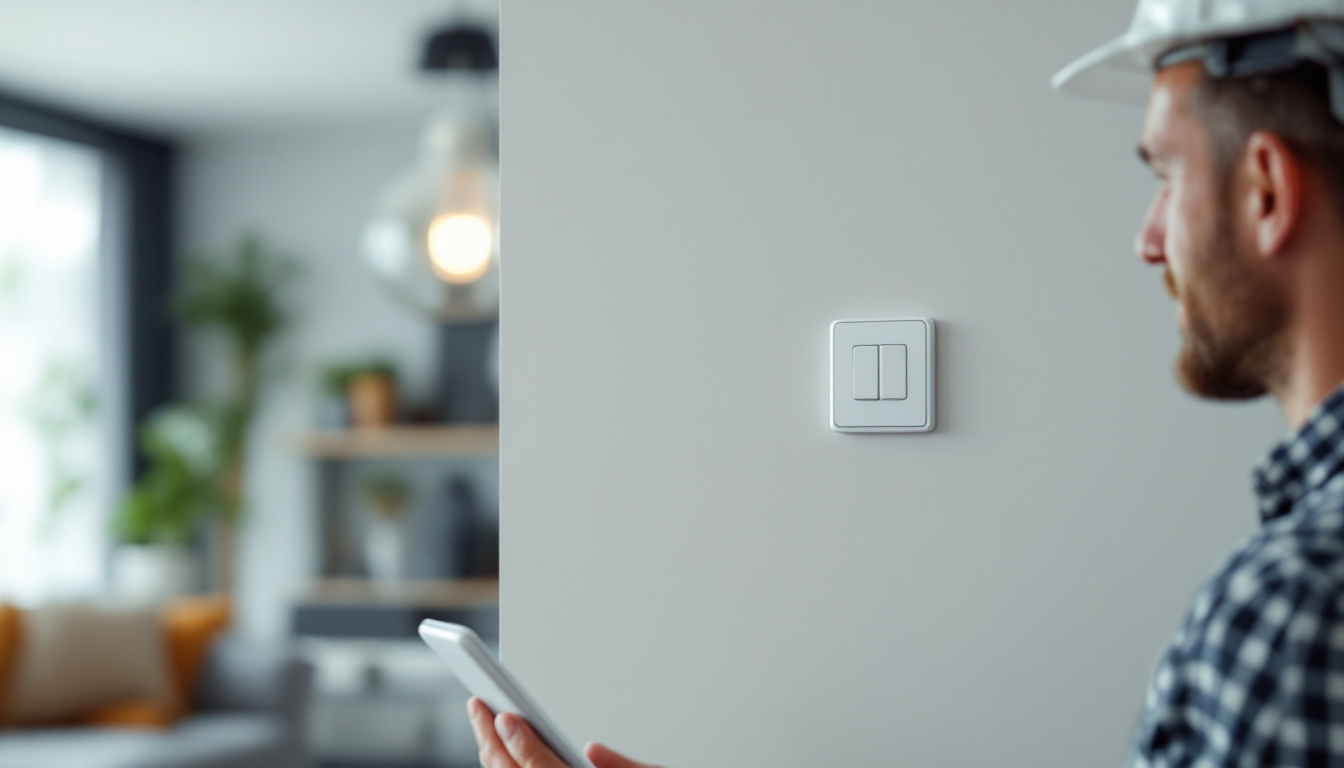
As the world of lighting continues to evolve, understanding the various bulb types is crucial for lighting contractors. Among these, Bulb Type G is a popular choice that deserves special attention. This article delves into the characteristics, applications, and advantages of Type G bulbs, providing essential insights for lighting professionals.
Bulb Type G, also known as globe bulbs, is characterized by its round shape and versatile design. These bulbs are often used in decorative fixtures and provide a soft, ambient light that enhances the aesthetic appeal of various spaces.
Typically made from glass, Type G bulbs come in different sizes and wattages, making them suitable for a wide range of applications. Their unique shape allows for creative lighting solutions, whether in residential or commercial settings.
The design of Type G bulbs is one of their most appealing features. Their spherical shape allows them to be used in open fixtures, pendant lights, and chandeliers, where they can be showcased as part of the overall design. The transparent glass allows for a warm glow, creating an inviting atmosphere.
Moreover, Type G bulbs are available in various finishes, including clear, frosted, and colored options. This variety enables lighting contractors to recommend specific bulbs that align with the client’s design vision, enhancing the overall aesthetic of the space. The frosted versions, for instance, diffuse light more evenly, making them ideal for settings where glare needs to be minimized, while colored bulbs can add a playful or dramatic touch, depending on the desired mood.
Type G bulbs are commonly used in a variety of settings. In residential spaces, they are often found in living rooms, dining areas, and bedrooms, where they provide ambient lighting. Their decorative appeal makes them a popular choice for accent lighting, highlighting architectural features or artwork.
In commercial environments, Type G bulbs can be used in retail displays, restaurants, and hotels. Their ability to create a warm and inviting atmosphere is particularly beneficial in spaces where customer experience is paramount. Additionally, they can be used in outdoor settings, such as patio lights and garden fixtures, to enhance outdoor living areas. The versatility of Type G bulbs also allows them to be integrated into smart lighting systems, providing users with the ability to adjust brightness and color temperature to suit different occasions, from cozy family gatherings to lively dinner parties.
Furthermore, the energy efficiency of modern Type G bulbs, especially those utilizing LED technology, makes them an environmentally friendly choice. These bulbs consume significantly less power than traditional incandescent options, while also boasting a longer lifespan. This not only reduces energy costs for consumers but also contributes to a more sustainable approach to lighting design. As the demand for energy-efficient solutions continues to grow, Type G bulbs stand out as a stylish yet practical choice for both homeowners and business owners alike.
When selecting Type G bulbs, it is essential to consider their technical specifications. These specifications can influence the performance and suitability of the bulbs for specific applications.
Type G bulbs come in various wattages, typically ranging from 25 to 100 watts. Understanding the wattage is crucial, as it directly affects the brightness of the bulb, measured in lumens. For instance, a 60-watt Type G bulb may produce around 800 lumens, making it suitable for general lighting needs.
Contractors should also consider the energy efficiency of the bulbs. Many Type G options are now available in LED formats, offering significant energy savings and longer lifespans compared to traditional incandescent bulbs. This shift not only benefits the environment but also reduces maintenance costs for clients.
Type G bulbs typically feature a medium base (E26) or a candelabra base (E12). The choice of base type is critical, as it determines compatibility with fixtures. Lighting contractors must ensure that the selected bulb base matches the fixture specifications to avoid installation issues.
Additionally, some Type G bulbs come with integrated features, such as dimmability or smart technology compatibility. Understanding these options allows contractors to provide tailored solutions that meet the specific needs of their clients.
Type G bulbs offer several advantages that make them a preferred choice for many lighting applications. These benefits extend beyond aesthetics and include functionality and energy efficiency.
One of the primary advantages of Type G bulbs is their versatility. They can be used in various fixtures, from table lamps to ceiling pendants, making them suitable for both residential and commercial applications. This adaptability allows contractors to recommend Type G bulbs for multiple projects, simplifying inventory management and client consultations.
Furthermore, their availability in different sizes and wattages means that contractors can find the perfect bulb for any space, whether it requires a subtle glow or bright illumination.
With the increasing emphasis on sustainability, energy efficiency has become a significant consideration for lighting contractors. LED Type G bulbs are particularly noteworthy for their energy-saving capabilities. Consuming significantly less power than traditional incandescent bulbs, LED options can last up to 25 times longer, resulting in lower energy bills and reduced waste.
By recommending energy-efficient Type G bulbs, contractors not only help clients save money but also contribute to environmental sustainability. This alignment with green practices can enhance a contractor’s reputation and appeal to eco-conscious clients.
Proper installation is crucial for the optimal performance of Type G bulbs. Lighting contractors should adhere to specific guidelines to ensure safety and efficiency during installation.
Before starting any installation, contractors should prioritize safety. Always turn off the power supply to the fixture before replacing or installing a Type G bulb. Using insulated tools and wearing protective gear can further enhance safety during the process.
Additionally, contractors should inspect the fixture for any signs of damage or wear. Ensuring that the socket is clean and free of debris will help maintain a secure connection and prevent electrical issues.
Type G bulbs, especially those made of glass, can be fragile. Contractors should handle them with care to avoid breakage. Using gloves can prevent fingerprints on the glass, which can affect the bulb’s performance and appearance.
When installing the bulb, ensure it is securely fitted into the socket. A loose connection can lead to flickering or complete failure of the bulb. Testing the fixture after installation is essential to confirm that the bulb is functioning correctly.
Regular maintenance of Type G bulbs can extend their lifespan and ensure consistent performance. Lighting contractors should educate clients on proper care and troubleshooting techniques.
Dust and debris can accumulate on Type G bulbs, diminishing their brightness and overall effectiveness. Contractors should recommend clients clean their bulbs regularly using a soft, dry cloth. For tougher stains, a mild soap solution can be used, but it is essential to ensure the bulb is completely dry before turning it back on.
Additionally, contractors should advise clients to avoid using abrasive materials that could scratch the surface of the bulb, as this can affect the light output and appearance.
Occasionally, Type G bulbs may experience issues such as flickering or dimming. Contractors should be prepared to troubleshoot these problems. Flickering can often be attributed to a loose connection, so checking the bulb’s fit in the socket is a good first step.
If the bulb continues to flicker after ensuring a secure connection, it may be a sign of an underlying electrical issue. In such cases, consulting an electrician may be necessary to diagnose and resolve the problem effectively.
The lighting industry is continuously evolving, and Type G bulbs are no exception. Emerging trends indicate a shift towards more innovative and energy-efficient solutions that lighting contractors should be aware of.
As smart home technology gains popularity, the integration of smart features into Type G bulbs is becoming more prevalent. These bulbs can be controlled remotely via smartphones or smart home systems, allowing users to adjust brightness, color temperature, and even set schedules.
Contractors should familiarize themselves with these smart options, as they can provide clients with enhanced convenience and control over their lighting environments. Offering smart Type G bulbs can also position contractors as forward-thinking professionals in the industry.
With ongoing advancements in LED technology, Type G bulbs are becoming even more energy-efficient. Manufacturers are continually developing new materials and designs that enhance light output while reducing energy consumption. This trend not only benefits the environment but also aligns with the growing demand for sustainable solutions.
Contractors should stay informed about these advancements to provide clients with the most up-to-date options. By recommending the latest energy-efficient Type G bulbs, contractors can help clients achieve their sustainability goals while enjoying high-quality lighting.
Bulb Type G is a versatile and aesthetically pleasing option for various lighting applications. Understanding its characteristics, advantages, and proper installation techniques is essential for lighting contractors aiming to provide the best solutions for their clients.
As the industry evolves, staying informed about trends and advancements in Type G bulbs will enable contractors to remain competitive and meet the changing needs of their clients. By embracing energy-efficient and innovative solutions, lighting contractors can enhance their reputation and contribute to a more sustainable future.
Ready to elevate your lighting game with the versatile and energy-efficient Bulb Type G? Look no further than LumenWholesale, where we provide lighting contractors with the highest quality, spec-grade lighting products at unbeatable wholesale prices. Say goodbye to inflated markups and hello to a vast selection of reliable lighting solutions that meet the strictest industry standards. Plus, with free shipping on bulk orders, you can stock up on premium lighting without any hidden fees. Don’t compromise on quality or value—Wholesale Lighting at the Best Value is just a click away. Experience the LumenWholesale difference today and light up your projects with confidence and style.

Discover innovative hacks for lighting contractors to enhance indoor staircases with smart lighting solutions.

Discover essential insights into smart WiFi light switches tailored for lighting contractors.

Explore the essential role of dimmer switches in modern lighting design and why every lighting contractor should master their installation and functionality.

Discover expert tips for lighting contractors on selecting and installing pendant lights in dining rooms.